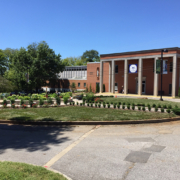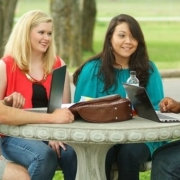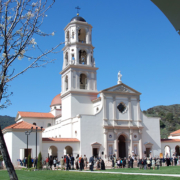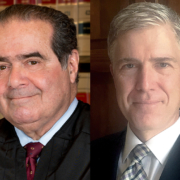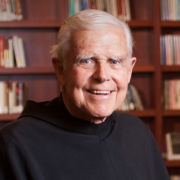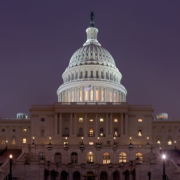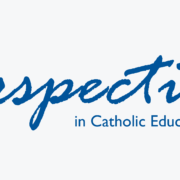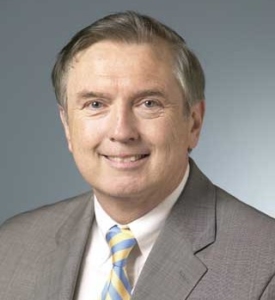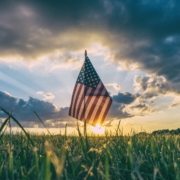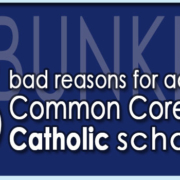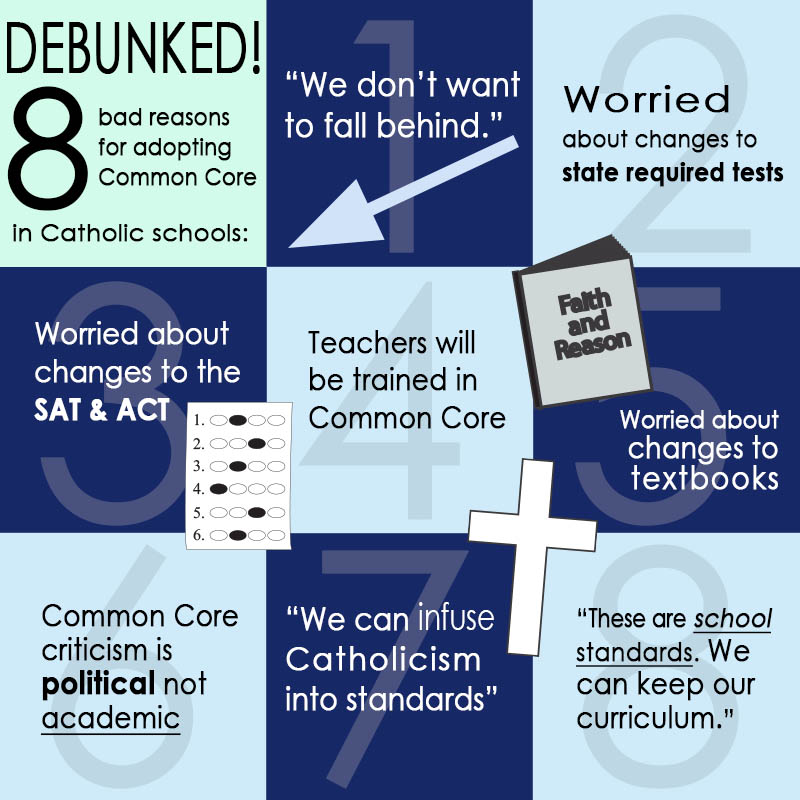The Land O’ Lakes Statement Has Caused Devastation For 50 Years
In hindsight, what they did was appalling.
But when several Catholic university leaders gathered in the summer of 1967 at a remote retreat in Land O’ Lakes, Wisconsin, did they fully anticipate the consequences of their vision for “modern” Catholic education? Hopefully not.
It was 50 years ago, on July 20-23, when Notre Dame’s Father Theodore Hesburgh, C.S.C., gathered his peers to draft and sign the “Land O’ Lakes Statement,” a declaration of the independence of Catholic universities from “authority of whatever kind, lay or clerical, external to the academic community itself.”
Over the course of just a few years following the statement, most Catholic colleges and universities in America shed their legal ties to the Church and handed their institutions over to independent boards of trustees. In the quest for secular prestige and government funding, many went so far as to remove the crucifixes from their classroom walls and to represent their Catholic identity in historical terms (such as, “in the Jesuit tradition”).
The wound of secularization deepened over the next few decades: many Catholic colleges and universities weakened their core curricula in favor of the Harvard model of electives and specialization, adopted a radical notion of academic freedom, embraced relativism and political correctness, and largely abandoned the project of forming young people for Christ outside the classroom.
It wasn’t until 1990 that the “Land O’ Lakes Statement” was soundly repudiated by Saint Pope John Paul II in Ex corde Ecclesiae, the apostolic constitution for Catholic universities. Although not yet accepted in its entirety, Ex corde Ecclesiae turned the tide toward renewal of Catholic identity and gave prominence to those faithful institutions that never accepted the Land O’ Lakes mentality. In the meantime, however, Fr. Hesburgh’s declaration did much damage.
It’s for good reason, then, that the “Land O’ Lakes Statement” has become a focal point in American Church history. It’s sometimes described as an explosive, revolutionary act that changed the trajectory of Catholic higher education, which may be an exaggeration. But it certainly was a watershed moment, evidenced by the rapid changes that followed the statement. It was also the culmination of years of unrest in Catholic universities—in many respects, a moral struggle with the temptation to pride and prestige at the expense of Catholic identity.
With the “Land O’ Lakes Statement,” that struggle was momentarily lost. It represented a public, deliberate choice for opportunity over mission, resulting in a voluntary exile from the once-lush gardens of truth and wisdom that had distinguished the world’s Catholic universities.
The allure of prestige
For most Catholic university graduates and educators before the late 1960s, alma mater was still as much Mother Church as her academic institutions. But more than a decade before the “Land O’ Lakes Statement,” influential academics were already expressing disappointment with the public status of Catholic universities in the United States.
This was argued forcefully by Monsignor John Tracy Ellis, a Church history professor at the Catholic University of America, whose lament was published and disseminated by Fordham University:
“…in no western society is the intellectual prestige of Catholicism lower than in the country where, in such respects as wealth, numbers, and strength of organization, it is so powerful. …Admittedly, the weakest aspect of the Church in this country lies in its failure to produce national leaders and to exercise commanding influence in intellectual circles, and this at a time when the numbers of Catholics in the United States… and their material resources are incomparably superior to those of any other branch of the universal Church.”
Note that Msgr. Ellis did not claim that Catholics were intellectually lacking, but only that they lacked academic “influence” and “prestige.” The prior claim would have been astonishing, given that Ellis’ university colleagues included (until 1950) then-Bishop Fulton Sheen—who not only was known for his radio and television preaching, but also was described as a highly gifted philosopher.
The Thomas Reeves biography of the Venerable Sheen reveals a much earlier battle, in which the saintly professor testified to Catholic University’s board of trustees against attempts to make the institution a “Catholic Harvard,” with emphasis on secular prestige. At a 1935 trustees meeting, Sheen called for the “primacy of the spiritual” in Catholic education:
“The task of integrating the supernatural with the natural, of infusing human knowledge with the divine, of complementing our knowledge of things with our knowledge of God, of making all things Theocentric, is the business of a Catholic university.”
He added that the bishops’ national university:
“…is to education what the Catholic Church is to religion, namely, the leaven in the mass. The Church is not one of the sects, it is the unique life of Christ; the Catholic University is not one of the American Universities, it is their soul.”
The deck is stacked
It would be wrong, then, to assume that Catholic identity was suddenly under assault by the participants in the 1967 retreat at Land O’ Lakes. It had endured through many trials. The appeal for academic independence from “all authority” had perhaps found its time, when society itself seemed to have turned against tradition and values.
Two other false notions about the Land O’ Lakes meeting deserve to be corrected. For one thing, the retreat was not an isolated gathering of independent reformers; it was surprisingly “official,” one of several regional meetings around the world to help draft a statement by the Vatican-affiliated International Federation of Catholic Universities (IFCU), of which Fr. Hesburgh was then president. The final Vatican-influenced document, “The Catholic University in the Modern World,” was far more traditional in its understanding of Catholic education, and in fact it is quoted in Ex corde Ecclesiae.
Second, although the Land O’ Lakes meeting was identified as the North American regional delegation to the IFCU, it was never truly intended to represent all of the region’s Catholic colleges and universities. Subsequent histories and Notre Dame’s own description indicate that the participants were focused on large, research institutions—an odd emphasis, since none of the represented universities had truly attained that status, but perhaps they aspired to it.
Moreover, it seems the deck was stacked with Fr. Hesburgh’s allies: only 10 universities were represented, including six from the U.S.: Boston College, Catholic University of America, Fordham, Georgetown, Notre Dame and Saint Louis. (The rector of the Catholic University of America was alone in publicly criticizing the resulting statement.) Of the 26 signers, seven were from Notre Dame and its sponsoring Holy Cross Fathers, and ten were Jesuits or leaders of Jesuit institutions.
Some of the signers were especially notable: Archbishop Paul Hallinan of Atlanta, Father Theodore McCarrick (then president of the Pontifical University of Puerto Rico and later Archbishop of Washington) and Father Vincent O’Keefe, S.J. (later Vicar General of the Society of Jesus).
Also intriguing is the signature by John Cogley, a leftist scholar representing the Center for the Study of Democratic Institutions. It’s not clear what he was doing at Land O’ Lakes, except that he was a celebrated intellectual in certain circles. He had been religion editor of the New York Times and a principal writer of John F. Kennedy’s 1960 speech advocating the separation of church and state. He later dissented from Humanae Vitae and became an Episcopalian.
For a few coins
I leave it to the reader to explore more of the statement itself, but I’ll make one more claim about the motivations behind it. Above I accused the signers of succumbing to the temptation for worldly prestige. But closely tied to secular prestige is the desire for money, which seems also to have been a related factor.
In 1987, Sister Brigid Driscoll, former president of Marymount College in New York, offered a defense of the “Land O’ Lakes” mentality:
“In the 1960s and early 1970s, most Catholic colleges severed even tenuous ties to the Church…
“We became independent and named lay trustees because of accreditation, the increased sophistication of higher education as a major enterprise and because of the demands of growth…
“Those decisions meant a windfall for the schools a few years later when the federal government offered financial aid to independent colleges…
“Any indication that these schools were under ecclesiastical authority could cast doubt on their independence and thus jeopardize that aid…”
The same year, in the New York Times (Jan. 16, 1987), Fr. Hesburgh made a similar claim:
“Catholic colleges and universities receive a large amount of financial help in different forms from the public monies of the state.
“…if there were no academic freedom and institutional autonomy for Catholic higher education, it might very well be that the [U.S. Supreme] Court would rule that public funding for Catholic institutions of higher learning is unconstitutional.”
In fact, however, the Supreme Court has ruled quite differently in support of religious institutions. Today some of the most faithful Catholic colleges like Franciscan University of Steubenville and Thomas Aquinas College participate freely in federal student aid programs, as does the “ecclesiastical” Catholic University of America.
It’s sadly true that, for the Catholic universities that embraced Land O’ Lakes, secularization has been rewarded with large endowments and state aid. But it’s simply not true that federal aid would have been unavailable to universities that maintained formal ties to the Church. Ironically, Notre Dame still is under some legal control by the Holy Cross Fathers; its students receive grants and loans, and it has received numerous federal grants from the Obama administration (albeit after giving the President an honorary degree).
For many smaller Catholic colleges, secularization has not benefited them financially. They struggle to distinguish themselves from state universities that provide the same job training at less cost.
Marymount College in New York is a case in point. Recall that Sr. Driscoll seemed proud of her institution’s choice to sever “tenuous ties to the Church,” bringing a “windfall” of taxpayer funds. The College closed its doors in 2007 for financial reasons.
This article first appeared at The National Catholic Register.


